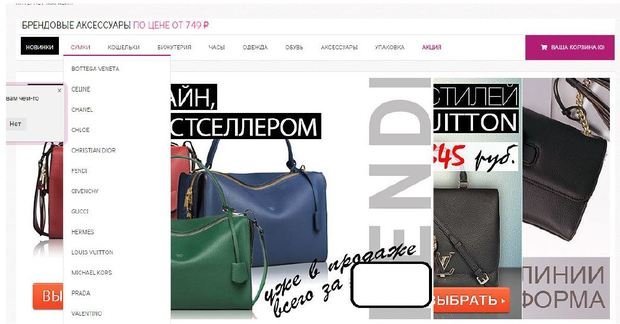Russian market flooded with fake fashion goods
Consumers in Russia want to buy fashion apparel but often can't afford it due to low purchasing power. They seek an alternative in marketplaces or on the Internet: counterfeits can be 10 times cheaper than originals. The share of knock-offs is estimated at up to 30% of the Russian fashion market.
The share of counterfeits in Russia varies from 5% to 30% with apparel and footwear being among the country's most counterfeited sectors, claims The Business of Fashion. The story began long ago, as Soviet Union's long-term isolation from the capitalistic world resulted in a shortage of Western produced goods. Over the last decades, markets in Russia have opened, but heavy import duties still make luxury fashion 20-30% more expensive than in Europe.
When the Russian ruble lost half of its value in 2014 due to an economic crisis, designer fashion became almost unattainable for ordinary Russians. As a result, many of them have turned to cheap knock-offs, which could cost by 90% lower than original products. With the expansion of the Internet, a wide variety of counterfeit items from fake Louis Vuitton bags to Gucci hoodies can now be found not only at local marketplaces but also on online platforms such as Instagram. This simulacrum of fashion brands became so popular that young designers from Russia and former Soviet republics, for example, Gosha Rubchinskiy from Vetements and Demna Gvasalia from Balenciaga, have riffed on the knock-offs in their collections.
Russia's apparel and footwear market has grown by 7,6% annually over the past five years and amounted to 2,8 trillion rubles (approximately $50 billion) in 2016, Euromonitor International estimated.

Meanwhile, Russia could become a potential fashion economy saviour due to its FashionNet project launched as part of the National Technology Initiative (NTI), considers Forbes' contributor Stephan Rabimov. FashionNet is a set of initiatives aimed at boosting the country's fashion industry with an ambitious goal of gaining 70% of domestic apparel market coverage by 2035. By comparison, according to the Russian Ministry of Industry and Trade, the share of domestic production within the Russian apparel, accessories and footwear market accounted for only a quarter of overall sales in 2016. The new project's production facilities are located in Moscow, St Petersburg, Kaliningrad and Ivanovo, which is a historic textile centre.
Since the collapse of the Soviet Union, Russia has struggled to produce a globally recognisable fashion brand or commercially viable trend, but local designers have been historically pushed into background both inside and outside Russia. ''Russia has been perceived as a country able to produce steel, oil, gas production goods but not consumer goods. Russia should make an effort to show that it is a country of talent, of great people, of sophisticated individuals in different areas and present the image of new Russia,'' commented Vice President of Inditex Carlos Espinosa De Los Monteros.